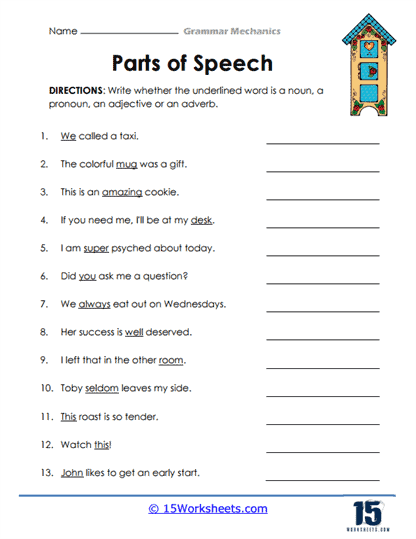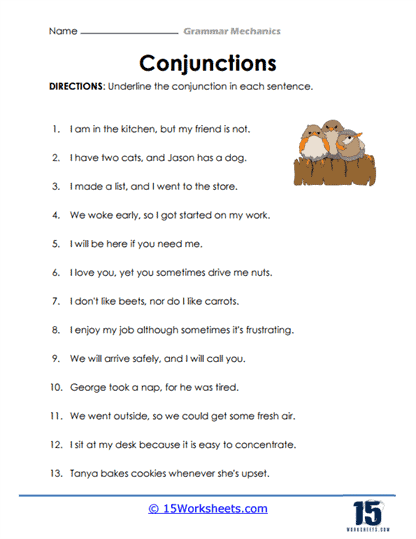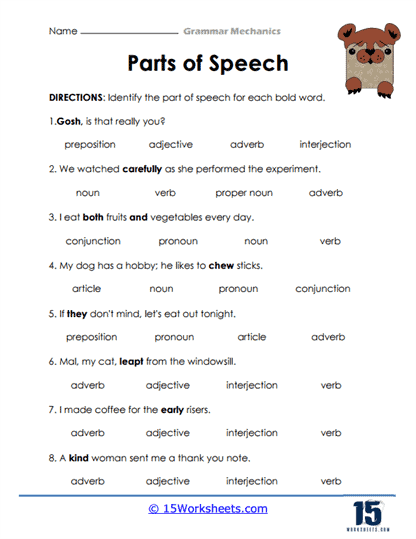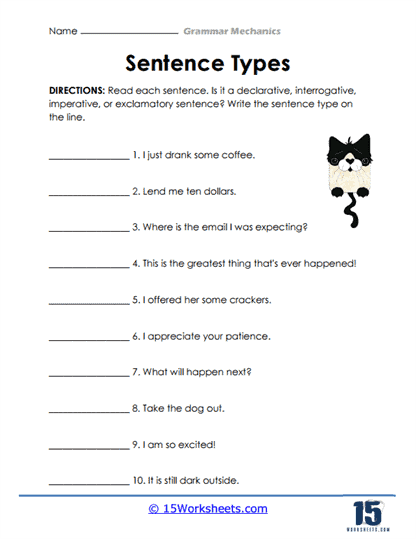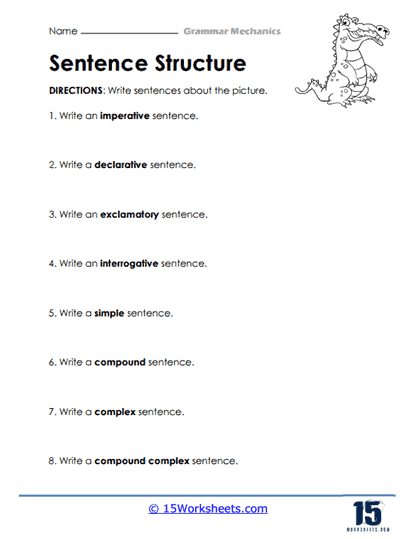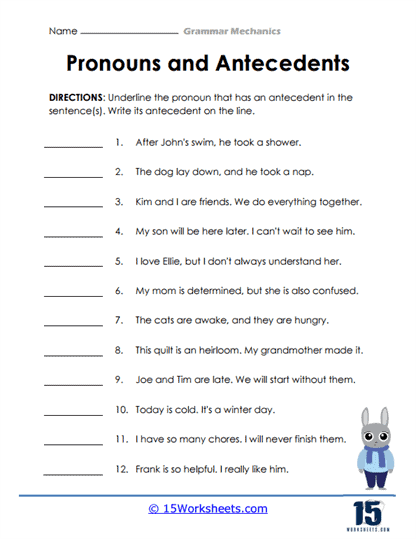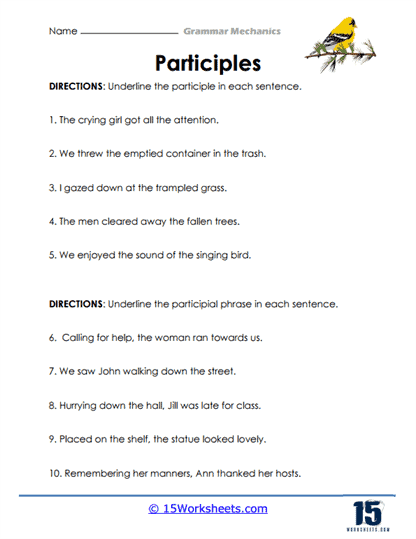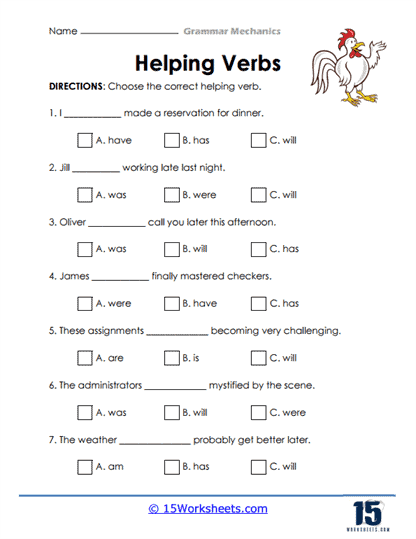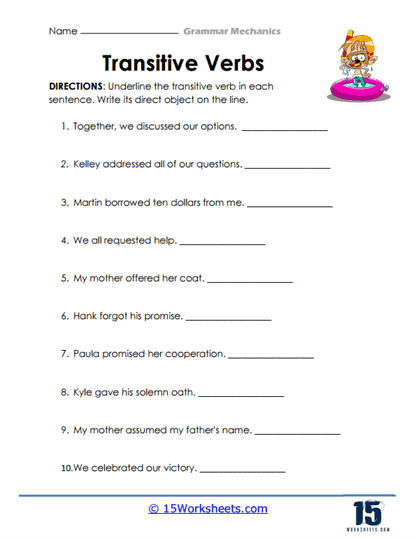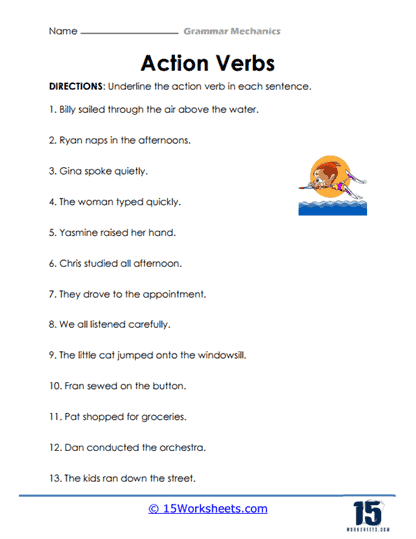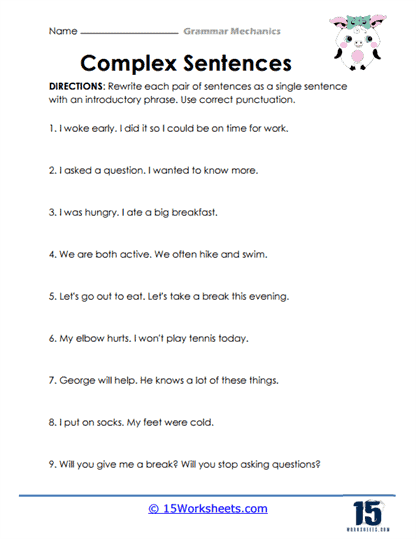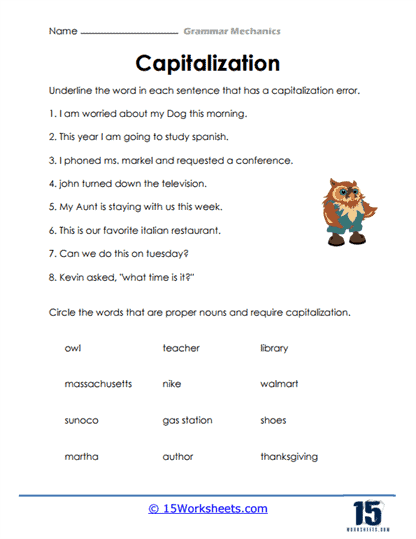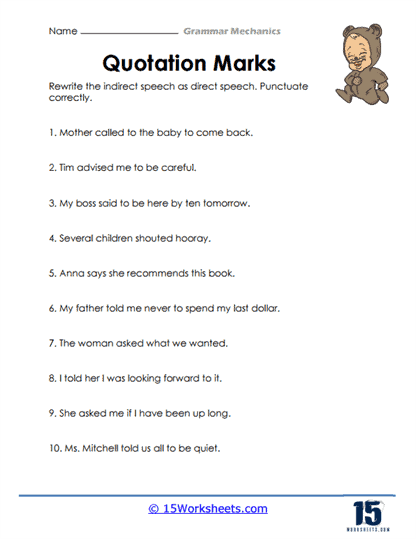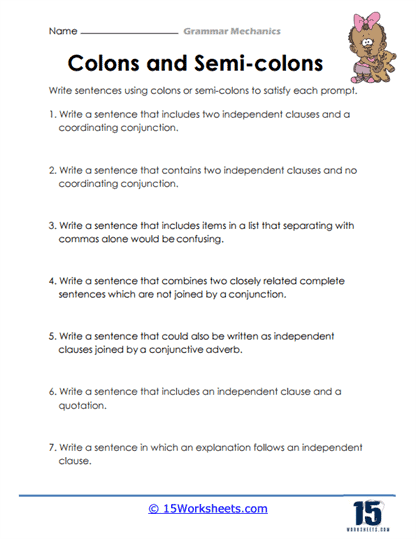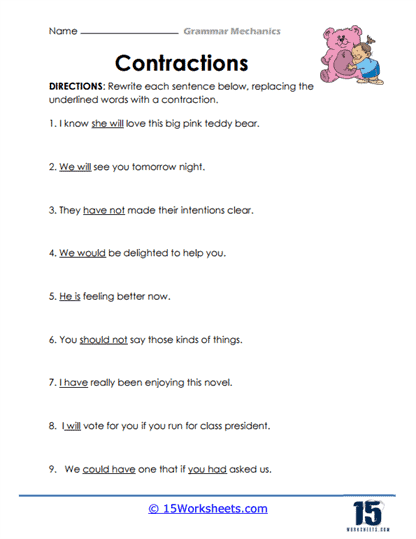Mechanics Worksheets
All About These 15 Worksheets
These worksheets on the different mechanics in grammar are valuable resources for teachers who seek to help their students understand and practice the various aspects of English grammar. These mechanics include different parts of speech, sentence types and structures, verb types, conjunctions, pronouns and antecedents, capitalization, punctuation, and more.
These worksheets include various exercises and activities, such as identifying different parts of speech in a sentence, changing the sentence structure, correcting punctuation, and practicing the correct use of verbs and pronouns. This helps students improve their grammar skills and develop a strong understanding of the mechanics of English. By practicing different aspects of grammar, students can improve their writing and speaking abilities, which is essential for effective communication in English.
Moreover, these worksheets on the different mechanics of grammar provide opportunities for students to expand their vocabulary and develop their critical thinking skills. By understanding the nuances of different sentence structures and grammar rules, students can express themselves more precisely and creatively. After completing these worksheets, students will be able to:
- Identify the various parts of speech in sentences;
- Understand the form and function of conjunctions, sentence types, pronouns and their antecedents, participles, different verb types, and contractions in sentences;
- Master the rules of the usage of capitalization, quotation marks, colons, and semi-colons;
- And construct their own complex sentences correctly.
Overall, these mechanics worksheets provide students with a comprehensive and structured approach to learning and practicing different aspects of English grammar. They help students to develop their grammar skills, improve their writing and speaking abilities, and expand their vocabulary, all of which are crucial for effective communication in English.
What are the mechanics of English grammar tackled in these worksheets?
The following are the definitions, rules, and examples for each of the topics covered in this collection of worksheets:
Parts of speech
- Parts of speech are categories of words that have different grammatical functions in a sentence.
- The main parts of speech are noun, verb, adjective, adverb, pronoun, preposition, conjunction, and interjection.
- Examples:
- Noun: cat, table, love
- Verb: run, eat, think
- Adjective: big, blue, happy
- Adverb: quickly, easily, slowly
- Pronoun: he, she, they
- Preposition: on, under, with
- Conjunction: and, or, but
- Interjection: wow, oh, ah
Conjunctions
- Conjunctions are words that connect words, phrases, or clauses in a sentence.
- The main conjunctions are coordinating conjunctions (FANBOYS) and subordinating conjunctions.
- Examples:
- Coordinating conjunctions: and, or, but, so
- Subordinating conjunctions: because, although, unless
Sentence types
- Sentence types refer to the different ways a sentence can be structured.
- The main sentence types are declarative, interrogative, imperative, and exclamatory.
- Examples:
- Declarative: I like pizza.
- Interrogative: Do you like pizza?
- Imperative: Give me pizza.
- Exclamatory: I love pizza!
Pronouns and antecedents:
- Pronouns are words that take the place of a noun in a sentence.
- An antecedent is the word that the pronoun refers to.
- Examples:
- Antecedent: The boy ate a sandwich. Pronoun: He ate a sandwich.
Participles:
- Participles are verb forms that can function as adjectives or parts of verb tenses.
- The main participles are present participle (-ing) and past participle (-ed).
- Examples:
- Present participle: Running shoes are comfortable.
- Past participle: Baked goods are delicious.
Helping verbs
- Helping verbs are verbs that help to form verb tenses and to show a verb’s mood or voice.
- Examples:
- He has eaten pizza.
- She will sing at the concert.
Transitive verbs
- Transitive verbs are verbs that have a direct object in a sentence.
- Examples:
- She ate pizza.
- He painted the room.
Action verbs
- Action verbs are verbs that describe an action or movement.
- Examples:
- She ran to the store.
- He danced all night.
Complex sentences
- Complex sentences are sentences that have one independent clause and at least one dependent clause.
- Examples:
- Although it was raining, he still went outside.
- After he finished his homework, he watched TV.
Capitalization
- Capitalization refers to the use of capital letters at the beginning of a word.
- Capital letters are used for proper nouns, the first word

